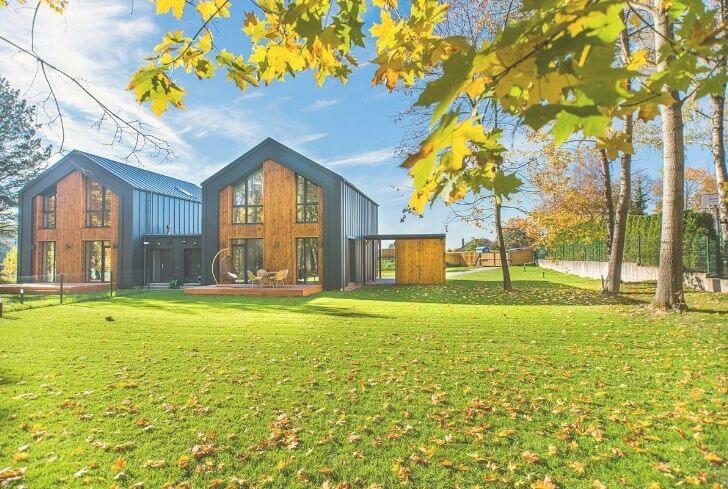Eco-friendly home improvements provide a cost-effective way of saving long-term energy costs as well. Not only do they reduce your carbon emission, but you can also save money on your electricity, water, and heating bills. Green energy upgrades are an investment for your bank and the environment.
If you’re looking to go green and save money, this article will hopefully help you understand which home improvements you need.
1. Tankless Water Heater
Traditional hot water systems that rely on storing large amounts of hot water in a tank can be inefficient and expensive. This system requires much energy to maintain the stored water’s temperature and regular maintenance to ensure it is running correctly.
Rather than relying on a water tank, tankless water heaters offer instantaneous hot water access. Cold water enters the heater unit and passes through a heat exchanger. This process immediately heats the water when switching on a hot water faucet.
According to the Department of Energy, these type of water heaters has 8% to 34% increased efficiency, making them an excellent investment in energy savings. With an on-demand water heater, you can rest assured that you will get the hot water you need without the inefficiency of traditional water heater tanks.
2. Environmentally Friendly Flooring
Typically, you need 2,000 square feet of flooring to furnish the average American house. Unfortunately, some popular materials used for this come with an undesirable effect. Wood that doesn’t come from a reputable supplier may cause massive deforestation in Central and African countries due to demand from better-off nations.
Vinyl is a cheaper alternative for flooring, but it has very high carbon emissions and can’t be recycled. Additionally, because of its shorter lifespan compared to more expensive and higher quality material, it eventually has to be ripped out and discarded in a landfill.
Building with an eye to the future is more important than ever, and builders are meeting the increased demand for greener flooring options. Not only does eco-friendly flooring reduce environmental impact, but it also provides us with more attractive and durable home options. Some of these options include:
- Bamboo
- Cork
- Linoleum
- Recycled rubber
- Reclaimed wood
3. Solar Panels
Solar energy is a clean and highly renewable electrical source to power your homes or business. It is one of the most promising renewable energy sources with the potential to reduce carbon emissions and contribute to a healthier environment drastically.
Currently, a solar energy solution requires a high initial investment. However, the Biden Administration recently introduced a 30% Residential Clean Energy Credit tax credit for solar roof installation, saving $9,000 over the system’s life. This credit means you can save roughly $300 annually up until 2032.
4. Smart Thermostat
Intelligent thermostats are becoming the go-to technology for most homeowners aiming to save energy and money. With programming options to adjust the temperature according to daily usage, they help maintain the desired comfort while reducing energy bills.
Depending on your model, you can easily control it using a smartphone app remotely or set a specific temperature depending on the time.
Not only do they provide the benefit of convenience and temperature control, but they can also qualify for the Energy Efficient Home Improvement Credit, allowing you to receive up to $1,200 annually for modifications and installations.
5. LED Lightbulbs
LED bulbs are the perfect solution if you want to be environmentally friendly while reducing energy costs. Compared to incandescent and halogen bulbs, they require much less power to operate and have a lifespan of up to 50,000 hours.
LED lamps last longer than traditional bulbs and provide superior brightness. With these advantages, it is no wonder why LED lighting has become so popular in households and businesses alike. Replacing your lightbulbs less often means you will lower upkeep costs and leave a smaller ecological footprint.
6. LEED-certified Access Panels
LEED certification is a globally accepted benchmark for sustainable building and design, indicating that the project has considered its environmental impact. These measures allow businesses to benefit from facilities, equipment, and amenities that boost indoor ecological quality while meeting current safety standards.
Installing LEED fire-rated access panels is an excellent start for any building owner looking to earn a LEED certification and keep their building safe. Not only does it help to make your building more energy efficient, but provides peace of mind that the property is up to code and compliant with the latest safety standards. Installing these panels is a simple and cost-effective way of ensuring that a building meets the requirements for certification.
Creating Habits For A Greener Future
Living more sustainably is essential to protecting our environment and the planet. It doesn’t have to be complicated or expensive either – by making small changes to our everyday habits, we can reduce our carbon footprint and help create a more sustainable future.
We are all accountable for our planet’s future, and making small changes in our lifestyle can have a considerable impact. Whether opting for tankless water systems or investing in energy-efficient appliances, there are many simple yet effective ways to lead a greener lifestyle. This list of ideas should inspire you to make positive changes and do your part for the environment.

